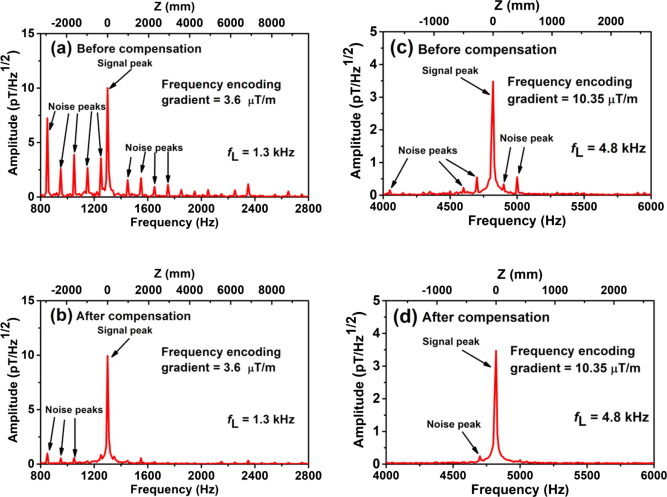SIMIT has made important progress in ultra-low field magnetic resonance imaging
Date:15-01-2018 | 【Print】 【close】
As a non-invasive medical imaging method, MRI exhibits excellent soft tissue contrast and is widely used in clinical diagnosis and research. Most commercial MRI systems utilize tesla-range superconducting magnets to obtain high signal-to-noise ratio (SNR) and spatial resolution, which is costly and has serious requirements for environmental field. In recent years there has been an increasing interest in developing MRI at ultra-low field. The field strength is four orders of magnitude lower than those of the commercial systems. Compared to conventional MRI, ULF MRI exhibits a number of advantages, such as imaging in the presence of metallic objects and enhanced T1 contrast without using contrast agents. However, power-line harmonic interference and fixed-frequency noise peaks introducestripe-artifacts in ULF MRI images both in unshielded environment and in a conductive shielded room. The stripe-artifacts will pass through the images and decrease SNR. Being supported by the Strategic Priority Research Program (B) of the Chinese Academy of Sciences (Grant No. XDB04020200), the researchers suggest an adaptive suppression technique to remove the artifacts in images by the combination of detector configuration design and de-noising algorithm. The concept is based on the spatial correlation of the interference terms from different positions. The suppression technique successfully improves the quality of MRI images without changing the measured values of the sample properties. This work was done using the extremely sensitive superconducting quantum interference devices (SQUIDs) for detection. Traditional Faraday coils can also be used in adaptive suppression for diverse NMR/MRI applications.

http://www.sciencedirect.com/science/article/pii/S1090780717302835